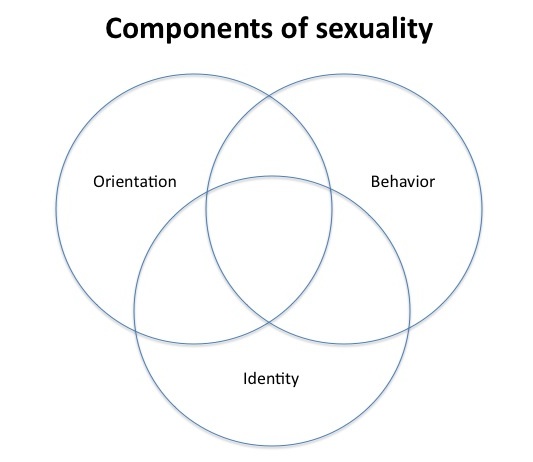சொற்பொருள்
UPDATE: Jan 11, 2022: Download an updated glossary intended for the media, developed by Queer Chennai Chronicles, Orinam and The News Minute, building on the work done by QCC-TNM media reference guide and Orinam’s terminology. Thanks to QCC, TNM, and the volunteers from Orinam, including its Gender Euphoria space, for all contributions |
பால்/Sex
இது பிறப்பில் தோன்றும் உடற்கூறு சார்ந்த வேறுபாடு. உடல் உறுப்புக்கள், தசைகள் மற்றும் பால் குரோமோசோம்கள் இவை அனைத்தும் ஒருவரின் உடற்கூறை நிர்ணயிக்கின்றன. பெரும்பாலும் காணப்படுவது ஆண் பால் அல்லது பெண் பால். சிலருக்கு இரண்டு பால் சமந்தப்பட்ட உறுபுக்களும் பிறப்பிலேயே அமைவதுண்டு. இவர்களை “இன்டர்செக்ஸ்” என்று அழைக்கிறோம்.
Sex refers to the biological make-up of a person. Most people are either male or female, and a few have biological features of both sexes. These are referred to as intersex (formerly hermaphrodite: which is now a derogatory term). The biological make-up is assessed from external body parts, sex chromosomes and/or tissues and organs.
பாலினம்/Gender
ஆண் தன்மை அல்லது பெண் தன்மை. பாலினம் என்பது ஒருவர் தன்னை அடையாளம் காண உபயோகிக்கும் சொல். உதாரணம்: சமூகம் ‘வலிமை’, ‘வீரம்’ போன்றவற்றை ஆண்தன்மையோடு இணைக்கிறது. ‘மென்மை’, ‘நளினம்’ போன்றவற்றை பெண்தன்மையோடு இணைக்கிறது. ஒருவரது பாலினம் அவரது பாலோடு பொருந்தி இருக்க வேண்டும் என்பது பலரின் எதிர்பார்ப்பு. உதாரணத்திற்கு ஒரு ஆண், ஆண்மையுடன் நடந்துகொள்ள வேண்டும், ஆணை போன்று தோன்ற வேண்டும் என்பது பலரின் எதிர்பார்ப்பு, அனுமானம். ஆண்மையின் வெளிப்பாடு பல கலாச்சாரங்களிலும், காலங்களிலும் வேறுபட்டாலும், சில குணாதிசயங்கள் என்றும் இருந்து வருபவை. இது போன்ற எதிர்பார்புகளுக்குள் அடங்காத, பொருந்தாத ஆண்கள் அல்லது பெண்களுக்கென்று இருக்கும் எதிர்பார்புகளுக்குள் அடங்காத, பொருந்தாத பெண்கள், பிறரால் தாழ்ந்தவர்கள், குறைந்தவர்கள் என்றும் கருதப்படுகிறார்கள். அப்படிப்பட்டவர்களை கேலி, கிண்டல் செய்வதும், துன்புறுத்துவதும் நடைமுறை.
Gender: This refers to the social categories of man and woman, and to the behaviors that we consider to be masculine and feminine. Gender is expected to conform to biological sex. Hence, someone whose sex is male, is expected to look like a man and behave in a masculine manner. What constitutes “masculine behavior” or “manly appearance” may vary culturally, and may vary across history, but some features are constant. Males who do not conform to the expectations society has of men, and females who do not conform to the expectations society has of women, are considered inferior or inadequate, and can be subjected to ridicule and harassment. Such ridicule and harassment is especially severe for those whose are transgender, i.e. those whose gender is at odds with their sex.

பாலீர்ப்பு/Sexual Orientation/attraction
இது பாலியல் ரீதியாக ஏற்படும் ஈர்ப்பு.
This refers to an individual’s attraction to men, women, and/or transgender people. Sexual orientation is not necessarily a preference for one sex over other(s); and hence the terms sexual orientation and sexual preference should not be used interchangeably.
பாலுறவு நடத்தை/Sexual Behavior
நடைமுறையில் ஒருவர் யாருடன் பாலுறவு கொள்கிறார்கள். அதாவது ஆண் மற்றும்/அல்லது பெண், திருனர்களுடன்.
This refers to an individual’s sexual behavior with men, women, and/or transgender people. The concept is most often used in the public health / epidemiological context, where behavior, rather than orientation or identity, is the focus of attention.
பாலுறவு அடையாளம்/Sexual identity
ஒருவர் தம்மை எப்படி அடையாளப்படுத்தி கொள்கிறார்கள். உதாரணம்: நங்கை, நம்பி, ஈரர்,கோதி, DD,திருநங்கை,அறவாணி. ஒருவரது பால் அடையாளம் அவர்களது பாலீர்ப்பு மற்றும் பாலுறவு நடத்தையுடன் பொருந்தியோ / பொருந்தாமலோ இருக்கலாம். உதாரணத்திற்கு ஒருவர் தம்மை “எதிர்பாலீர்ப்பாளர்” என்று அடையாளப்படுத்தி கொள்ளலாம் , அனால் அவருக்கு ஆண், பெண் என்று இரண்டு பாலினர் மீதும் ஈர்ப்பு இருக்கலாம்.
Sexual identity refers to how individuals identify themselves. Terms such as Gay, Bi, Kothi, Double Decker, Aravani, and Straight all connote sexual identity. Sexual identity may or may not be aligned with orientation or behavior. For instance, a man may identify as straight but in reality be attracted to women as well as men.
எதிர்பாலீர்ப்பு/Heterosexuality
எதிர் பால் மேல் ஏற்படும் பாலீர்ப்பு. பெண்கள் மேல் பாலீர்ப்பு உடைய ஆண்கள், ஆண்கள் மேல் பாலீர்ப்பு உடைய பெண்கள் (எதிர்பாலீர்ப்பாளர்)
Heterosexuality refers to attraction to members of the other sex.
ஒருபாலீர்ப்பு அல்லது தன்பாலீர்ப்பு/Homosexuality
தனது பாலின் மீது ஏற்படும் பாலீர்ப்பு. ஆண்கள் மேல் பாலீர்ப்பு உடைய ஆண்கள், பெண்கள் மேல் பாலீர்ப்பு உடைய பெண்கள் (தன்பாலீர்ப்பாளர் / ஒருபாலீர்ப்பாளர்)
Homosexuality refers to exclusive or predominant same-sex attraction.
கேய், ஒருபாலீர்ப்புடைய ஆண், ஒருபாலீர்ப்புள்ள ஆண், தன்பாலீர்ப்புடைய ஆண்
/Gay man
தனது பாலின் மீது ஈர்ப்புள்ள ஆண். ஆண்கள் மேல் பாலீர்ப்பு உடைய ஆண்கள். ஆண்களை விரும்பும் ஆண்கள். இவர்களில் சிலர் தங்களை அடையாள படுத்திக்கொள்ள நம்பி (தமிழ்) அல்லது கே (ஆங்கிலம்) என்ற சொற்களை பயன்படுத்துகிறார்கள்.உதாரணத்திற்கு ஆண்கள் மீது ஈர்புள்ள ஆண்கள் அனைவரும் இந்த சொற்களை உபயோகப்படுத்துவதில்லை, ஏனெனில் இவர்களில் சிலருக்கு பெண்கள் மீதும் ஈர்ப்பு இருக்கலாம்.
A sexual identity term adopted by some (but not all) people who are exclusively or predominantly attracted to those of the same sex. Usually, but not always, this term is used by men. Sexual identity does not necessarily reflect sexual orientation or behavior. For instance, many men attracted to other men, or men who have sex with other men, do not use the term ‘gay’ to describe themselves because their attraction is not limited to men, or because they feel this identity term is associated with a certain culture/ sub-culture to which they do not relate. In an increasingly globalized popular culture, ‘gay’ is often treated as an orientation term, and used interchangeably with ‘homosexual’.
ஆண்களுடன் பால் உறவு கொள்ளும் ஆண்கள் / எம். எஸ். எம்/ Men who have Sex with Men (MSM)
ஆண்களுடன் பாலுறவு கொள்ளும் ஆண்களை கூட்டாக அழைக்கும் சொல். இவர்கள் தங்களை எப்படி அடையாள படுத்திக் கொள்கிறார்கள் என்பது முக்கியமல்ல. கே / நம்பி இதுபோன்ற சொற்களை பயன்படுத்துவதை வீட, எளிமையாக, எல்லோரையும் உட்கொள்ளும் விதமாக அமைகிறது இந்த சொல். தமிழிலும் “எம்.எஸ்.எம்” என்ற சொல் வழக்கில் உள்ளது. இந்திய அரசாங்கம் தனது ஹெச். ஐ. வீ /எய்ட்ஸ் தடுப்பு திட்டங்களில் இந்த சொல்லை ஆண்களுடன் பால் உறவு கொள்ளும் அனைவரையும் கூட்டாக அழைக்க பயன்படுத்துகிறது.
Men who have sex with men (abbreviated as MSM, also known as males who have sex with males) are male persons who engage in sexual activity with members of the same sex, regardless of how and whether they identify themselves. The term MSM was coined in the public health context, when it was found that interventions designed for ‘gay’ men did not succeed in reaching out to a majority of men who had sex with men who did not inhabit ‘gay’ spaces such as gay bars and clubs, and did not identify with other aspects of ‘gay’ sub-culture, often identified with white/privileged Anglophone middle-class men. In India, the government uses the term MSM in its HIV prevention programs, recognizing that huge numbers of men who fit this behavior category do not consider themselves homosexual, bisexual, pansexual or gay.
லெஸ்பியன், ஒருபாலீர்ப்புடைய பெண், ஒருபாலின ஈர்ப்புடைய
பெண் /Lesbian woman
தனது பாலின் மீது ஈர்ப்புள்ள பெண். பெண்கள் மேல் பாலீர்ப்பு உடைய பெண்கள். பெண்களை விரும்பும் பெண்கள். இவர்களில் சிலர் தங்களை அடையாள படுத்திக்கொள்ள நங்கை (தமிழ்) அல்லது லெஸ்பியன் (ஆங்கிலம்) என்ற சொற்களை பயன்படுத்துகிறார்கள்.
A sexual identity term adopted by some (but not all) women who are exclusively or predominantly attracted to other women.
இருபாலீர்ப்பு/Bisexuality
ஆண்/பெண் இருவர் மேலும் ஏற்படும் பாலீர்ப்பு. ஆண்/பெண் இருவர் மேலும் பாலீர்ப்பு உடைய ஆண்கள் மற்றும் பெண்கள் (இருபாலீர்ப்பாளர்கள்). இவர்களின் ஈர்ப்பு இரண்டு பாலினர் மீதும் சம அளவில் இருக்க வேண்டும் என்பது கட்டாயமல்ல.
Bisexuality refers to attraction towards males and females. It does not imply equal degree of attraction, simply significant attraction towards both.
ஈரர்/Bisexuals
ஆண் மற்றும் பெண் இரண்டு பாலினர் மீதும் ஈர்ப்புள்ளவர்கள்.
People attracted to both men and women. It can also be used to describe identity. In the public health context, the usage of this term is limited to describing sexual behavior. This usage leads to a lot of misconceptions, such as the idea that a bisexual is always/ concurrently having sex with men and women; or that a married man who has sex with other men is necessarily bisexually oriented. Not true. A homosexual person forced into marriage with someone of the other sex does not ‘become’ bisexual. Likewise, an individual could be in a committed relationship with one other individual (of any sex) and still be bisexually oriented and identified. Bisexuality, as the quip goes, is about “what’s in your head, not who’s in your bed”.
திருனர்/Transgender person
தங்களது பிறப்பு ரீதியான பாலும், பாலினத்தன்மையும் மாறுபட்டதாக உணர்பவர்கள். உதாரணம் : தான் பெண் என்று மன அளவில் நம்பும் ஆண்கள். திருனர்கள் பால் மாற்று அறுவை சிகிச்சை மற்றும் வழிமுறைகளை செய்ய விரும்புவர்களாக இருக்கலாம் அல்லது விரும்பாதவர்களாக இருக்கலாம். திருனர்களின் பால் ஈர்ப்பும் எல்லோரையும் போல பன்மைபட்டது.
Transgender refers to individuals whose sense of their own gender (i.e. gender identity) differs from their sex assigned at birth. For example, it could refer to individuals assigned male at birth, who identify themselves as women or as not-men, or to individuals assigned female at birth, who identify themselves as men or as not-women. A transgender person may or may not desire gender-affirmation surgery (formerly sex-reassignment surgery) or other procedures, and could have any sexual orientation.
திருநங்கை/Trans woman/ Trans feminine [formerly Male To Female Transgender (MTF)]
பிறப்பால் ஆண்பாலும், மன அளவில் பெண்பாலாகவும் அடையாளம் காண்பவர்கள். பால் மாற்று அறுவை சிகிச்சை மற்றும் வழிமுறைகளை செய்ய விரும்புவர்களாக இருக்கலாம் அல்லது விரும்பாதவர்களாக இருக்கலாம். திருனரில் ஒரு பிரிவு.
This term refers to male-born individuals who consider themselves as women. Some (but not all) of these individuals opt for gender-affirmation surgery (formerly sex-reassignment surgery) or other procedures, to align their external sexual characteristics with their gender identity.
திருநம்பி/Trans man/ Trans masculine [formerly Female To Male Transgender (FTM)]
பிறப்பால் பெண்பாலும், மன அளவில் ஆண்பாலாகவும் அடையாளம் காண்பவர்கள்.பால் மாற்று அறுவை சிகிச்சை மற்றும் வழிமுறைகளை செய்ய விரும்புவர்களாக இருக்கலாம் அல்லது விரும்பாதவர்களாக இருக்கலாம். திருனரில் இன்னொரு பிரிவு
This term refers to female-assigned individuals who identify their gender as men. Some (but not all) of these individuals opt for gender-affirmation surgery (formerly sex-reassignment surgery) or other procedures, to align their external sexual characteristics with their gender identity.
ட்ரான்ஸ்செக்சுவல்/Transexual [medical term not favoured by the community]
பிறப்பால் ஒரு பாலும், மன அளவில் வேறு பாலினத்துடன் அடையாளம் காண்பவர்கள், மற்றும் இந்த வேறுபாடை மாற்ற அறுவை சிகிச்சை அல்லது ஹார்மோன் சிகிச்சை மேற்க்கொண்டவர்கள் / மேற்க்கொள்ள விரும்புவர்கள்.
This term refers to individuals who have opted, or plan to opt, through gender-affirmation surgery (formerly sex-reassignment surgery) or other procedures, to align their external sexual characteristics with their gender identity. Transexual(ity) is primarily a medical term.
மாறுபட்ட பாலீர்ப்பு மற்றும் பாலடையாளம் கொண்டவர்கள் (மாற்று பாலின-பாலீப்பு) / LGBT or Queer
நங்கை-நம்பி-ஈரர்-திருனர் இவர்கள் அனைவரையும் மொத்தமாக குறிப்பிடும் சொல்.
Used to collectively refer Lesbians-Gays-Bisexuals-TransGender people
பலபாலீர்ப்பு/Pansexuality
ஆண்/பெண் என்னும் வேறுபாட்டைக் கடந்த பாலீர்ப்பு.
Pansexuality refers to attraction that includes males, females and transgender people. Sometimes, people use the term to refer to attractions that are NOT based on sex of the individual(s) concerned.
மாற்று பாலின-பாலீர்ப்பு சுயமரியாதை/Gay Pride or LGBT Pride
நங்கை-நம்பி-ஈரர்-திருனர் இப்படி மாறுபட்ட பாலீர்ப்பு மற்றும் பாலடையாளம் கொண்டவர்கள் தங்கள் பாலீர்ப்பையும், பால் அடையாளங்களையும் எண்ணி கூனி குறுகாமல், எல்லோரையும் போல தலை நிமிர்ந்து கௌரவமாக, சுய மரியாதையுடன் வாழ்வதையே “சுய மரியாதை” என்று குறிபிடுகிறோம்.
LGBT pride or gay pride is the concept that lesbian, gay, bisexual, and transgender (LGBT) people should be proud of their sexual orientation and gender identity. It is often used to describe marches, rallies and other events celebrating visibility of our communities.
வானவில்-சுயமரியாதை பேரணி/Pride Parade
நங்கை-நம்பி-ஈரர்-திருனர் இப்படி மாறுபட்ட பாலீர்ப்பு மற்றும் பாலடையாளம் கொண்டவர்கள் தங்கள் பாலீர்ப்பையும், பால் அடையாளங்களையும் கலாச்சாரத்தையும் போற்றும் எல்லா நிகழ்ச்சிகளையும் “வானவில் சுய மரியாதை விழா” என்று அழைக்கிறோம்.
Pride parades for the LGBT community (also known as gay pride parades, pride events and pride festivals) are events celebrating lesbian, gay, bisexual, and transgender (LGBT) culture.
வெளியே வருதல்/Coming Out
மாறுபட்ட பாலீர்ப்பு மற்றும் பாலடையாளம் கொண்டவர்கள், தங்களது அடையாளம் மற்றும் பாலீர்ப்பை, அறிந்து ஏற்றுக்கொள்வதையும் பின்பு தங்கள் குடும்பத்தாருக்கும் மற்றும் நண்பர்கள், உறவினர்களுக்கும் அதை தெரிவிப்பதையும் தான் “வெளியே வருதல்” என்று அழைக்கிறோம்.
Coming out is the process by which individuals accept their own homosexual or bisexual orientation or transgender identity, and then let friends and family members know about this aspect of themselves. Check out Orinam.net Coming Out resources here.
(c) ஓரினம். எங்கள் காப்புரிமை கொள்கையை படிக்கவும்
Notes 2021: We are removing the terms நங்கை for lesbian woman, and நம்பி for gay man as they are not in use beyond a brief period in the mid-2000s.
